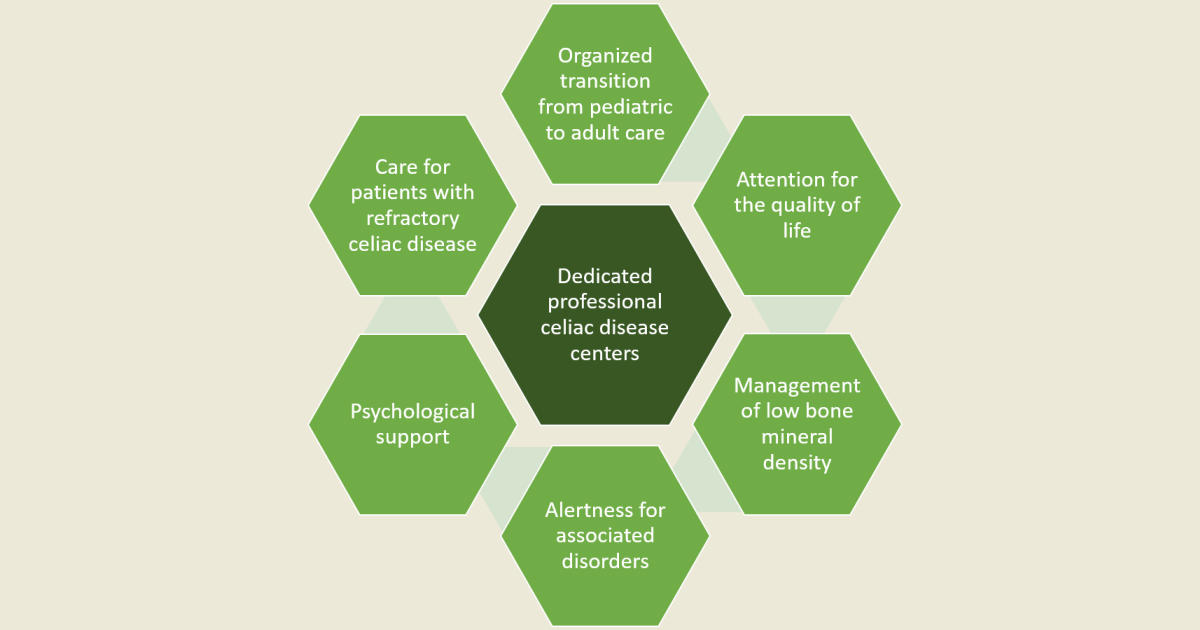- 5.0Impact Factor
- 9.1CiteScore
- 13 daysTime to First Decision
Nutritional Considerations and Health Issues of a Gluten-Free Diet
This special issue belongs to the section “Nutrition and Public Health“.
Special Issue Information
Dear Colleagues,
Celiac disease (CeD) is a systemic disease that causes chronic enteropathy of the small intestine and develops through an inadequate immune response to gluten in genetically predisposed individuals. To date, the only effective treatment is a gluten-free diet that essentially relies on the consumption of naturally gluten-free foods and gluten-free dietary products. Several patients have difficulty controlling their diet, and therefore, regularly consume sufficient gluten to trigger symptoms. Furthermore, an inadequately balanced gluten-free diet can increase the risk of obesity, negatively affect glucose and lipid metabolism, and increase the risk of metabolic syndrome. Therefore, adequate nutritional counseling is necessary for patients diagnosed with CeD in order to prevent and treat the components of metabolic syndrome.
Emerging therapeutic options for CeD are based on the removal of toxic gluten peptides, the modulation of intestinal permeability, or the restoration of the gut microbiota. These treatment options have shown encouraging preliminary results in clinical trials. If successful, these novel approaches raise the possibility of reintroducing gluten, in amounts to be determined, into the diets of patients with CeD.
The planned Special Issue will include research and reviews from the most recognized names research topics related to a gluten-free diet, which means that only well-established data will be presented. We are also aiming to cover new and challenging topics within the Special Issue.
Dr. Abdulbaqi Al-Toma
Prof. Dr. Chris JJ Mulder
Guest Editors
Manuscript Submission Information
Manuscripts should be submitted online at www.mdpi.com by registering and logging in to this website. Once you are registered, click here to go to the submission form. Manuscripts can be submitted until the deadline. All submissions that pass pre-check are peer-reviewed. Accepted papers will be published continuously in the journal (as soon as accepted) and will be listed together on the special issue website. Research articles, review articles as well as short communications are invited. For planned papers, a title and short abstract (about 250 words) can be sent to the Editorial Office for assessment.
Submitted manuscripts should not have been published previously, nor be under consideration for publication elsewhere (except conference proceedings papers). All manuscripts are thoroughly refereed through a single-blind peer-review process. A guide for authors and other relevant information for submission of manuscripts is available on the Instructions for Authors page. Nutrients is an international peer-reviewed open access semimonthly journal published by MDPI.
Please visit the Instructions for Authors page before submitting a manuscript. The Article Processing Charge (APC) for publication in this open access journal is 2900 CHF (Swiss Francs). Submitted papers should be well formatted and use good English. Authors may use MDPI's English editing service prior to publication or during author revisions.
Keywords
- celiac disease
- gluten free diet
- nutritional deficiencies
- bone mineral density
- dietary therapy for celiac disease
- malabsorption
- metabolic syndrome
- non-dietary therapy

Benefits of Publishing in a Special Issue
- Ease of navigation: Grouping papers by topic helps scholars navigate broad scope journals more efficiently.
- Greater discoverability: Special Issues support the reach and impact of scientific research. Articles in Special Issues are more discoverable and cited more frequently.
- Expansion of research network: Special Issues facilitate connections among authors, fostering scientific collaborations.
- External promotion: Articles in Special Issues are often promoted through the journal's social media, increasing their visibility.
- e-Book format: Special Issues with more than 10 articles can be published as dedicated e-books, ensuring wide and rapid dissemination.

